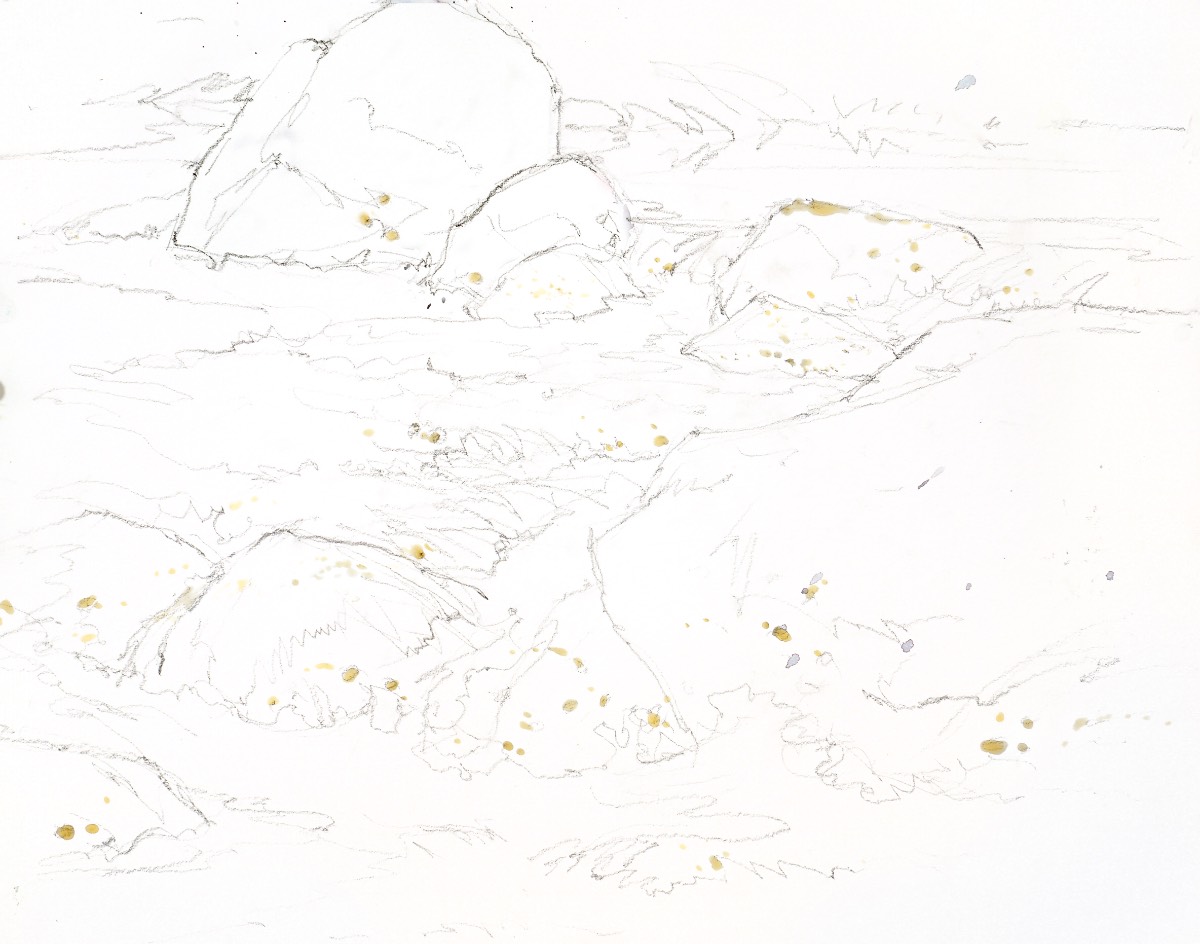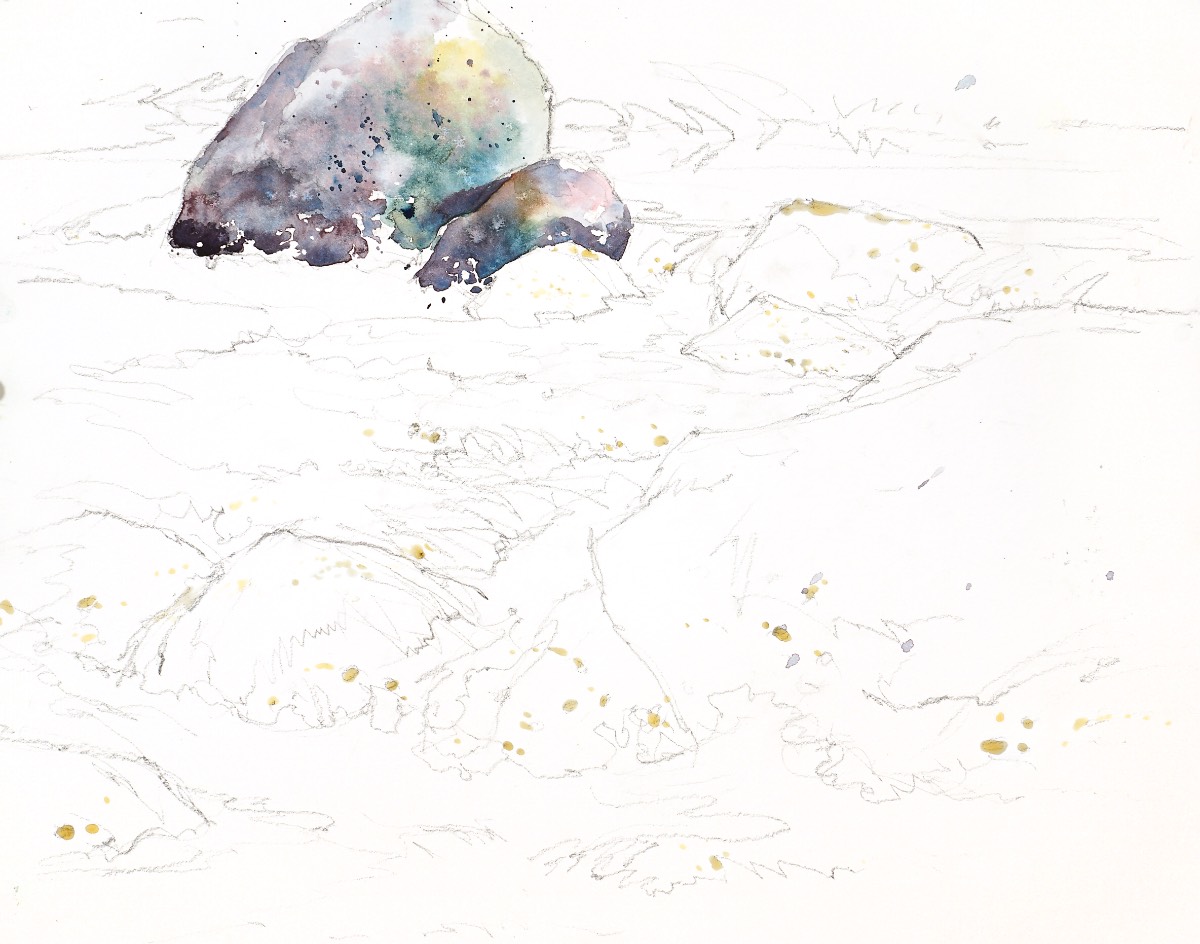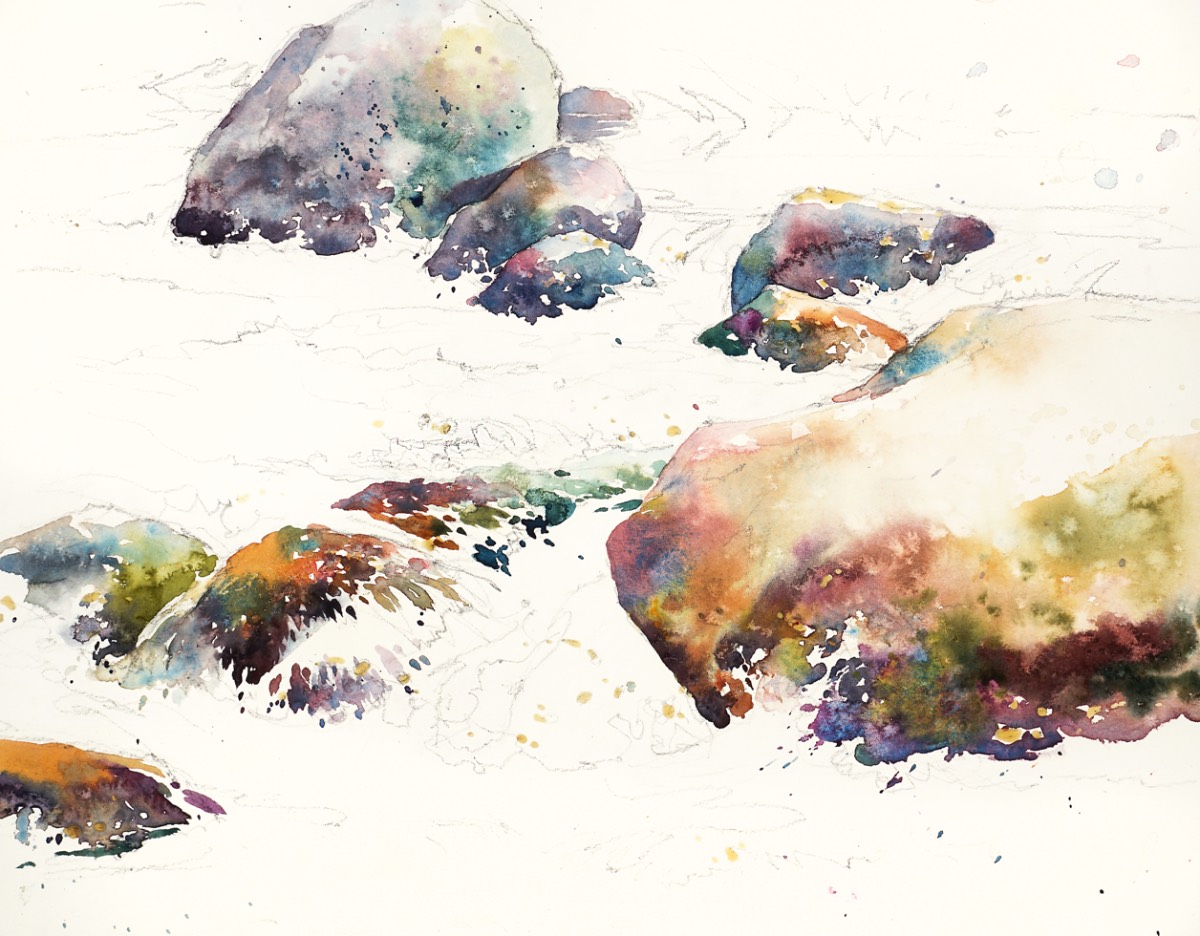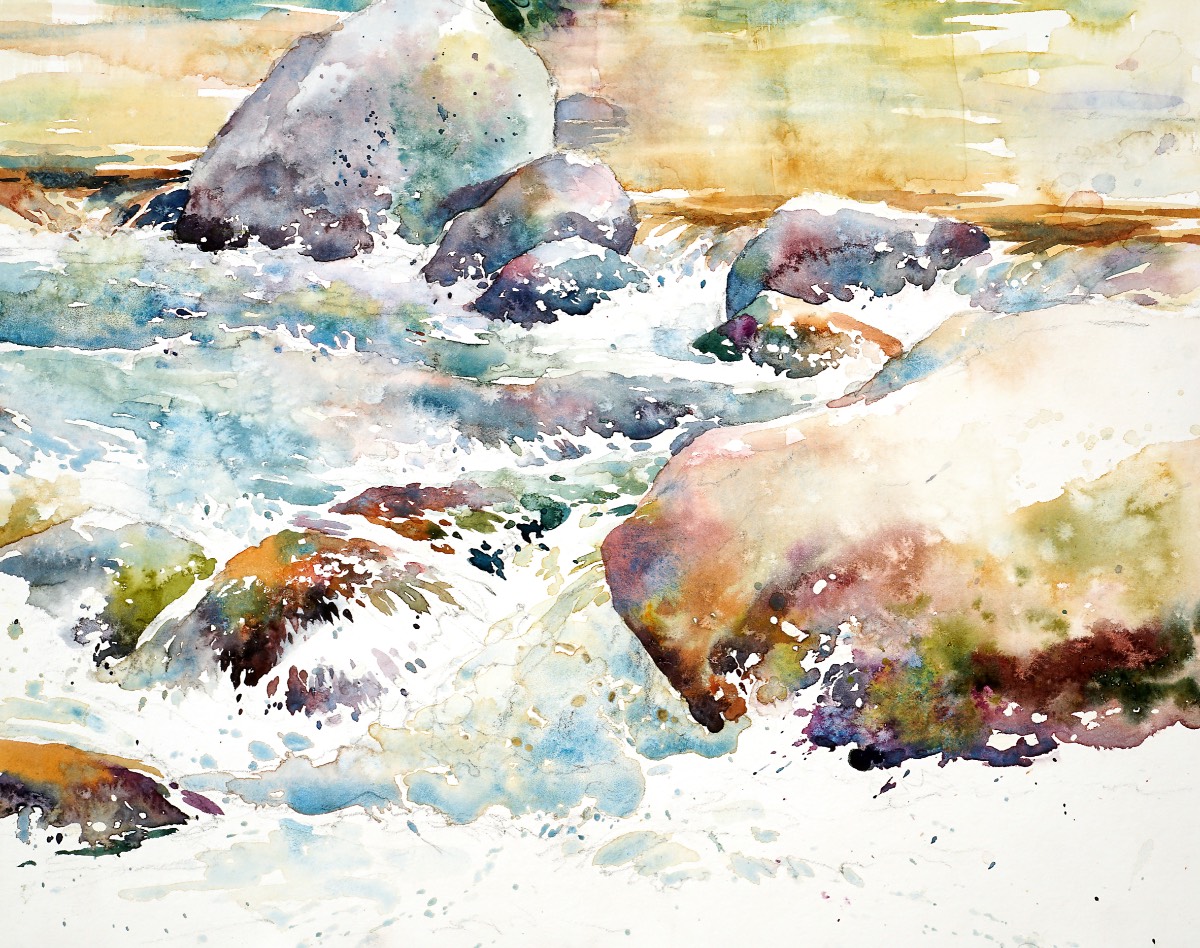By Julie Gilbert Pollard
In the first part of this lesson, I demonstrated my process for making a plein air study in watercolor. Today, I’ll show you how to turn that study into a larger studio painting.
WATERCOLOR TUTORIAL: Studio Painting
In my studio, I’ll use the study and a photo of the same spot, but from a slightly different view and time of day, to make another sketch and painting. For the finished piece, I’ll include more detail and more creative color. Having the simple study as a roadmap can help me find my way if I get bogged down or confused about how to transfer the mental image I have for the painting onto my surface.



To start, I make a drawing, taking care to create an asymmetrical composition. I strategically place several dots of masking fluid to save important areas of the white paper.

Although I sometimes choose an approach arbitrarily, I more often decide on one that seems well-suited to the subject and the ambience I want the painting to embody. For this piece, I decide on using a more or less “direct approach,” meaning that I’ll finish each area as much as possible before moving on to the next. I begin by painting the topmost rocks. By comparing these rocks with the same rocks in the finished painting you can see that very little, if any, more work has been done on them.

I continue painting the rocks, including those partially submerged, using creative, unexpected colors in appropriate values. Using negative painting, I suggest their forms around the whitewater that’s splashing up in front of them. The colors I use may be striking — quite different from the colors actually evident in the scene, but the shapes and values are the critical elements. Color is just icing on the cake.

I now move into the chaotic water. Although it may appear tumbling and unruly, the water has form and structure, with distinct shapes I identified in the initial drawing. I take each water shape as it comes, using brushstrokes that mimic the rhythm and movement I not only see, but feel.

For the finishing touches, I remove the masking and spatter on a few splashes of opaque white where needed for emphasis.
A master of many mediums, Julie Gilbert Pollard has a number of video workshops to help you improve your watermedia painting skills.








I really enjoyed this 2-part series, it’s so helpful and interesting to see the steps involved. Love your colours and movement in the painting.